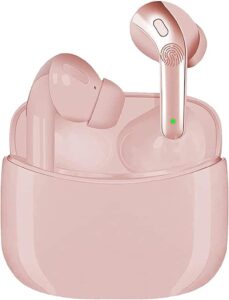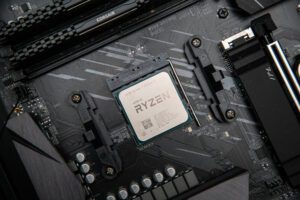The normal temperature for cpu is typically between 40°c and 70°c. Cpu temperature is a crucial aspect of keeping your computer functioning correctly.
The cpu is what powers the computer, and if it overheats, it can cause system instability and even damage your hardware. It’s essential to understand what temperature your cpu operates at and what temperature range is considered normal. This article will discuss what a cpu is, why it gets hot, what temperature range is considered safe, how to monitor your cpu temperature, and steps you can take to keep your cpu cool.
By the end of this article, you will have a better understanding of what a cpu is and how to take care of it.


Credit: automatelife.net
Understanding Cpu Temperature: A Quick Overview
If you are a computer enthusiast, you must have heard about cpu temperature. It’s one of the critical aspects of your system’s health that you need to monitor regularly. This blog post will help you understand the basics of cpu temperature and how it affects your computer’s performance.
Definition Of Cpu Temperature
Before diving into the factors that impact cpu temperature, let’s first define it. The cpu temperature is the temperature of your computer’s central processing unit (cpu). It’s an essential aspect of your computer’s health since high temperatures could lead to hardware failures, stability issues, and performance degradation.
Factors That Impact Cpu Temperature
Several factors could impact your cpu temperature, and some of them are:
- Cooling system: The cooling system is responsible for dissipating the heat generated by the cpu. If your cooling system isn’t efficient enough, the heat could build up and cause high temperatures.
- Ambient temperature: The surrounding temperature of your computer could affect its internal temperature. If your room is too hot, your computer could become too hot as well.
- Overclocking: Overclocking is a process where you increase your cpu’s clock speed to achieve better performance. While it can provide better performance, it also generates more heat.
- Dust accumulation: Dust accumulation inside your computer’s case can block airflow and cause high temperatures.
The Importance Of Maintaining Optimal Cpu Temperature
Maintaining optimal cpu temperature is crucial for your system’s health and performance. Here are some reasons why you should keep an eye on your cpu temperature and make sure it’s within the optimal range.
- Hardware longevity: High temperatures could lead to hardware failures, reducing your system’s lifespan.
- System stability: High temperatures could cause instability issues, such as system crashes and freezes.
- Performance degradation: High temperatures can reduce your cpu’s performance, resulting in slower overall system performance.
Understanding cpu temperature is crucial for your system’s health and performance. By monitoring your cpu temperature, you can ensure that it’s within the optimal range, leading to better hardware longevity, system stability, and performance.
How To Measure Cpu Temperature
Different Methods For Measuring Cpu Temperature
There are several ways to measure cpu temperature. Let’s briefly go through the different methods:
- Bios: Some motherboards include basic temperature sensors that will allow you to view your cpu’s temperature in the bios.
- Software: Numerous programs are available that can monitor your cpu temperature, such as core temp, real temp, and speedfan.
- External thermometers: External thermometers can also be used to measure cpu temperature, but they can be less accurate and are not recommended for determining precise measurements.
Tools Needed For Measuring Cpu Temperature
Now that you know the different methods for measuring cpu temperature, let’s discuss the tools you need to get started.
- Cpu temperature monitoring software: As stated earlier, several free software programs are available for monitoring cpu temperature, such as core temp, real temp, and speedfan.
- Thermal sensors: Most modern cpu’s include embedded temperature sensors, so you don’t need to purchase any extra hardware.
- Heat sinks: Heat sinks can help to dissipate heat from your cpu, which can keep temperatures down.
Understanding Temperature Measurement Units
Finally, it’s essential to understand the different units of measurement when it comes to temperature. The three most common units are fahrenheit (°f), celsius (°c), and kelvin (k).
- Fahrenheit: This is used primarily in the united states and is based on the melting and boiling points of water. A normal cpu temperature in fahrenheit would be around 140°f to 160°f.
- Celsius: This unit is used worldwide and is based on the freezing and boiling points of water. A normal cpu temperature in celsius would be around 60°c to 71°c.
- Kelvin: Kelvin is commonly used in scientific research and calculations and is based on the theoretical temperature of absolute zero. The normal cpu temperature in kelvin would be around 333k to 344k.
Measuring your cpu temperature is crucial for preventing damage to your computer. By using the right tools, understanding the different units of measurement, and keeping track of your cpu temperature, you can help keep your system running smoothly.
What Is The Optimal Operating Temperature Range For Cpus?
Defining Optimal Operating Temperature
Cpus can generate a lot of heat when in use and to keep them working efficiently, there is a particular temperature range that they should operate within. The optimal operating temperature is the range of temperature within which the cpu can function at its best.
It is essential to know what this temperature range is to keep your computer running smoothly and to avoid any damage to your cpu.
The Impact Of Operating Temperature On Cpu Performance
An increase in operating temperature can have a significant impact on cpu performance. If a cpu is not operating within the optimal temperature range, several issues may arise, such as:
- The cpu may slow down, affecting your computer’s performance.
- The cpu may shut down entirely to protect itself from further damage.
- Your computer may crash, and you may lose unsaved data.
The Risks Of Operating Cpus Outside The Optimal Temperature Range
Operating cpus outside the optimal temperature range can have long-term consequences for your computer. Overheating the cpu can cause:
- Reduced cpu lifespan due to stress on the components
- Damage to other components in your computer
- Permanent damage to the cpu, requiring a replacement
To avoid these risks, it is essential to monitor the temperature of your cpu regularly. Installing a temperature monitoring software can help you keep an eye on the operating temperature of your cpu.
Understanding the optimal operating temperature range for cpus is crucial for maintaining computer performance and longevity. Keeping your cpu cool and within its operating temperature range is key to preventing any long-term damage to your system.
Factors That Affect Cpu Temperature
Understanding the factors that impact cpu temperature can help you determine if your processor is running at normal operating temperatures. In this section, we’ll explore four key factors that affect cpu temperature: fan speed and cooling effectiveness, ambient temperature, overclocking, and cpu design and architecture.
Fan Speed And Cooling Effectiveness
The fan speed and cooling effectiveness are essential factors that impact your cpu temperature. The faster your fan, the cooler your cpu will run. Similarly, if your cooling system is more effective at removing heat from the cpu, then the processor temperature drops.
Here are some tips for optimizing your fan speed and cooling effectiveness:
- Ensure that your fan is set to an optimal speed in your bios settings, not too high to create excess noise, and not too low
- Clean your computer’s fans regularly to make sure they work efficiently
- Invest in an efficient cpu cooler to lower your cpu temperature
- Use high-quality heatsink grease to optimize the transfer of heat between the cpu and heatsink
Ambient Temperature
High ambient temperatures can impact your cpu’s temperature. If your room temperature is already warm, the cpu will run hotter than usual. Here are some suggestions for reducing the impact of ambient temperature on your cpu:
- Keep your computer in an air-conditioned room
- Use an external cooling system like a fan to lower the room temperature
- Open the computer case to allow air to circulate inside the case
Overclocking
Overclocking can lead to higher cpu temperatures. Overclocking increases the clock speed of your processor, which in turn leads to more heat generation. Here are some tips for managing your cpu temperature while overclocking:
- Increase your fan speed and invest in a better cooling system
- Monitor your cpu temperature regularly, and adjust your overclocking settings for optimal performance and temperature balance
- Avoid overclocking for extended periods to reduce stress on your cpu
Cpu Design And Architecture
Finally, the design and architecture of your cpu can also impact its temperature. Some cpus are more efficient at running cooler than others. Here are some tips to keep your cpu temperature low based on design and architecture:
- Choose cpus designed for cooler operation, with low thermal design power (tdp) ratings
- Consider investing in newer generations of cpus, as these tend to be more efficient than older generations
- Invest in cpus with built-in thermal sensors for accurate temperature monitoring
By understanding the factors that impact your cpu temperature, you’ll be better equipped to monitor your processor’s temperature and make the necessary adjustments. Remember to keep your cooling system and fan speeds optimized, manage ambient temperatures, avoid overlocking for prolonged periods, and choose the cpus with cooler operation design for optimal temperature management.
Best Practices For Maintaining Optimal Cpu Temperature
Maintaining an optimal cpu temperature is crucial for your computer’s overall performance. In this section, we’ll discuss the best practices for keeping your cpu temperature within safe limits.
Choosing The Right Cooling Solution For Your Cpu
Choosing the right cooling solution for your cpu is the first step towards maintaining an optimal temperature. Here are some essential points to consider:
- Determine the tdp (thermal design power) of your cpu: This will help you calculate the amount of heat your cpu generates and, accordingly, the cooling solution you need.
- Choose the right cooler type: You can opt for an air or water-based cooler. Air coolers are cost-effective and straightforward to install, while water coolers are more efficient but require maintenance.
- Check for compatibility: Make sure the cooler you choose is compatible with your cpu socket and motherboard.
Configuring Your System For Optimal Temperature Regulation
Configuring your system is the next step towards achieving optimal temperature regulation. Here are some tips:
- Adjust the fan curve: Adjusting the fan curve helps regulate the airflow by increasing the rpm of the fans when temperatures rise.
- Use a thermal paste: Applying a high-quality thermal paste between the cpu and the cooler improves heat transfer and reduces temperatures.
- Optimize cable management: Proper cable management ensures that there’s sufficient airflow within the case.
Performing Regular Maintenance
Performing regular maintenance is vital in keeping your cpu temperature under control. Here are some maintenance tips:
- Clean the cooler: Dust accumulation can clog the cooler fins and reduce cooling efficiency. Regularly cleaning the cooler with a can of compressed air is recommended.
- Reapply thermal paste: Over time, thermal paste can dry out and become less efficient. Reapplying thermal paste every six months can significantly improve cooling performance.
- Check for loose connections: Loose connections can cause improper contact between the cpu and the cooler, leading to overheating. Regularly checking for loose connections is crucial.
Avoiding Common Mistakes That Can Cause Overheating
Lastly, avoiding common mistakes is crucial in preventing overheating. Here are some mistakes to avoid:
- Overclocking: Overclocking can generate more heat than the cpu is designed to handle, leading to overheating.
- Running intensive applications without monitoring temperatures: Running intensive applications without monitoring temperatures can lead to overheating, causing permanent damage to your cpu.
- Ignoring warning signs: If you notice unusual fan noise or system crashes, it’s best to check the temperature of your cpu immediately.
By following these best practices, you can maintain an optimal cpu temperature and prolong your computer’s lifespan.
Frequently Asked Questions Of What Is The Normal Temp For Cpu
What Is The Normal Temperature Range For A Cpu?
The normal temperature range for a cpu is between 40°c to 65°c while idle and 70°c to 90°c under load.
What Happens If A Cpu Gets Too Hot?
If a cpu gets too hot, it can cause system instability, crashes, and permanent damage to the processor.
How Can I Monitor My Cpu Temperature?
You can monitor your cpu temperature by using free software like hw monitor, core temp, or speedfan. Some motherboards also have built-in monitoring software.
Conclusion
To wrap up, monitoring your cpu temperature is an essential part of maintaining your computer’s health and performance. The normal range may vary depending on the make and model of your cpu. However, as long as your temperature is within the recommended range, you should have no issues.
It is crucial to keep an eye on your cpu temperature, especially if you are a heavy user or overclock your cpu. You can use various software tools to monitor your cpu temperature and make necessary adjustments to keep it within a safe range.
Just remember, keeping your cpu temperature within the normal range will not only protect your computer from overheating but also ensure the longevity and optimal performance of your system. So, ensure you check your cpu temperature regularly and take necessary actions when needed to safeguard your computer and ensure top-notch performance.



